Peter Santenello writes about moving to Kyiv in 2016:
That November in 2016 was a step into another dimension for my mind, and new scenery for my eyes. Kyiv didn’t quite have that same charm as it did in the summer… grey skies fused into grey buildings, like one wide and long brushstroke of paint on canvas.
But I didn’t want everything to be great; I didn’t want the weather to be perfect. I wanted texture, depth, and grit… and Ukraine checks all of these boxes like a seasoned professional.
Every place evokes a feeling in the first twenty-four hours. Ireland, drinking. Bali, relaxation. Las Vegas, excess. New York, busyness. Ukraine… authenticity.
The country has an uncanny ability to keep things authentic. There are a whole set of factors that lead to this outcome, but where much of the modern world is trying to put on a show, Ukraine is one of those places that doesn’t. In a way, it’s very simple here; people only smile if they mean it. There are no “being nice” gestures, only gestures that come from authentic intentions whether for good or bad.
My thoughts returned to this when I read last week that Downtown Charlottetown Inc. has a program called Gritty to Pretty, which seeks to fund “projects [that] will contribute to DCI’s strategic beautification goals.”
While I support the general notion of supporting creative workers in using the city as a canvas, the “Gritty to Pretty” wording of this program infantilizes artists, reducing their creative work to “gussying up the place.”
I don’t want my community to be pretty, like Santenello I want it to have “texture, depth, and grit,” and if the business community is going to subsidize art, it should remove the shackles of “pretty” from its program, embrace the grit, and fund authentic art that changes the world.
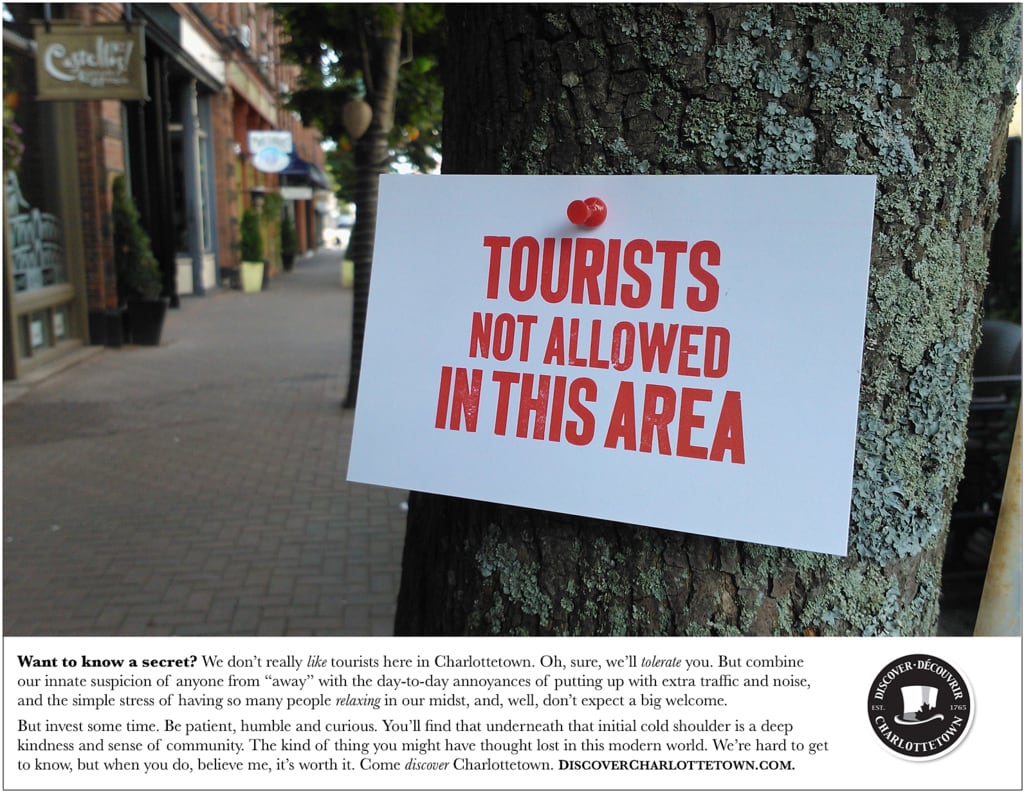
(My entry to the Charlottetown Perspectives program in 2012)
One of the nice developments in the annals of democracy here on PEI is that Standing Committee meetings are now broadcast live online, with audio and video archived for later listening and watching. In addition, full written transcripts are prepared of all meetings. As a result, you can now read the transcript of the presentation that Carolyn Bateman and I made to the Standing Committee on Education and Economic Development last week.
The heart of my comments came in these two paragraphs on page 34:
I guess, I would finish off with one comment, which is that my son, Oliver and I go walking at the Holland College walking track every night. We’ve been doing that to try and get some exercise in the winter. The hallways at the Centre for Community Engagement at Holland College are not wide enough for Oliver, Oliver’s service dog and I to walk down. This precipitated a conversation between Oliver and I about whether architects, when they’re designing a building should design buildings so they work just for some people or whether they should work for everybody. Of course, his answer was that they should design buildings so they work for everybody.
Really, I think that the approach that, on a bird’s eye level, we want to be taking when we’re talking about supporting people with autism, is designing all of our systems so that they work for everybody, not just for some people. I think, maybe, what gets missed here sometimes is that Carolyn and I have both spent a lot of time raising young adults or full-fledged adults with autism and they’re our children and we love them. They are not patients. They are not broken. They’re full-fledged contributing members of society and we want to be there to support them and we want them to be supported by the community when we’re not there to do that ourselves.
It’s fumbly-bumbly because I was speaking off the cuff, but if I’d been limited to speaking two paragraphs, it’s these that I would choose.
My understanding of “accessibility” has evolved a lot in recent years, and I think “design all of our systems so that they work for everybody, not just for some people” is a pretty good place to land for now.
The move-the-Reinventorium plans continue apace: on Wednesday morning a team of smart and burly people from McQuaid’s will arrive, equipped with forklift, cables, and grappling hooks, to move the Golding Jobber № 8 two blocks east. This will involve hauling the press up out of the basement at The Guild, into a trailer, down Richmond Street, and then down into the St. Paul’s Parish Hall basement. McQuaid’s moved the press in 6 years ago: they do good work, are rigorous about safety, and are about the nicest movers you’ll ever meet.
My part of this plan involves ensuring that the press can be stripped down to fit through the 31 inch wide door at the other end, and that was this morning’s project.
This involved, among other things, hacksawing off an inch from the axle, removing the drive belt and the bicycle wheel it runs on, taking off the motor, and wrenching off the connecting rod.
This last bit was a challenge: it was easy to unbolt the top end, but the bottom end’s bolt is, ingeniously, accessible only through a small porthole on the inside of the press, a region of uncommon grease and gunk. After deducing that I needed a 1-1/4” socket for that bottom bolt, I got everything aligned, filed off a little bit of metal that was dinting the bolt, malleted the socket into place, and ratcheted the bolt off. I was covered in gunk by the time I was done, but the connecting rod is off:

When the morning was done, I measured the width of the press, and it’s now coming in below 31 inches wide. Unless I’ve missed something (three dimensional space is not my strong suit), we should be good to go.
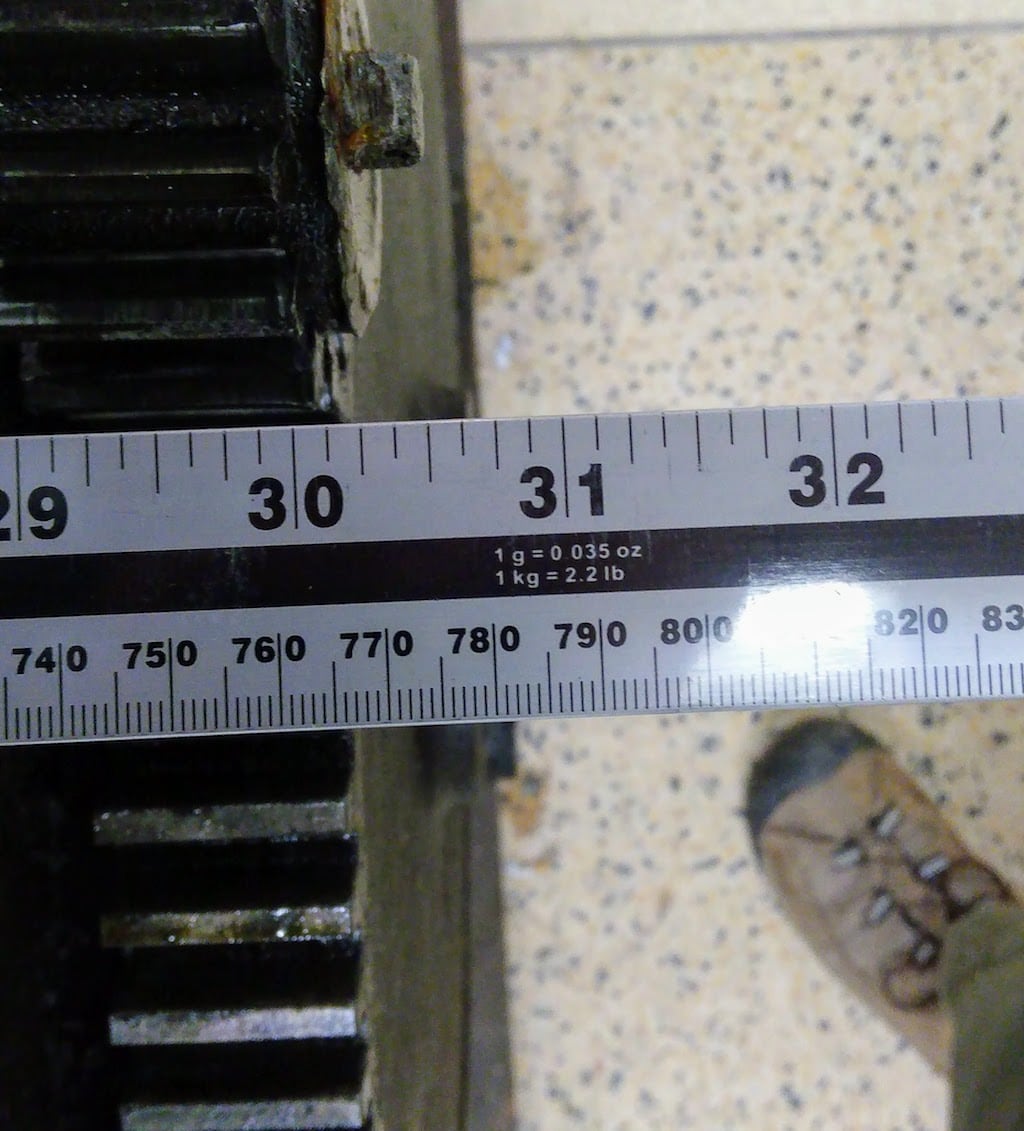
We have gotten into the habit of going to Receiver Coffee’s pizza-pasta night on Thursdays at the Brass Shop. The food is tasty, the price reasonable, the staff friendly and the vibe as mainline hipster as Charlottetown gets.
Last night, though, something was off: we showed up just after 6:00 p.m. expecting the usual packed room but found ourselves the only customers. While a few more people dribbled in over the next hour, relatively speaking the Brass Shop was deserted.
It turns out that counter-programmed against pizza-pasta night was a soft opening of the new Upstreet downtown beer store in the old Tweels at Kent and University.
The overlapping region of the Venn diagram of pizza-pasta hipsters and beer hipsters runs strong; it seems that we three were among the few sitting outside it.
Who would have ever thought that such a scheduling crisis would ever afflict Charlottetown.
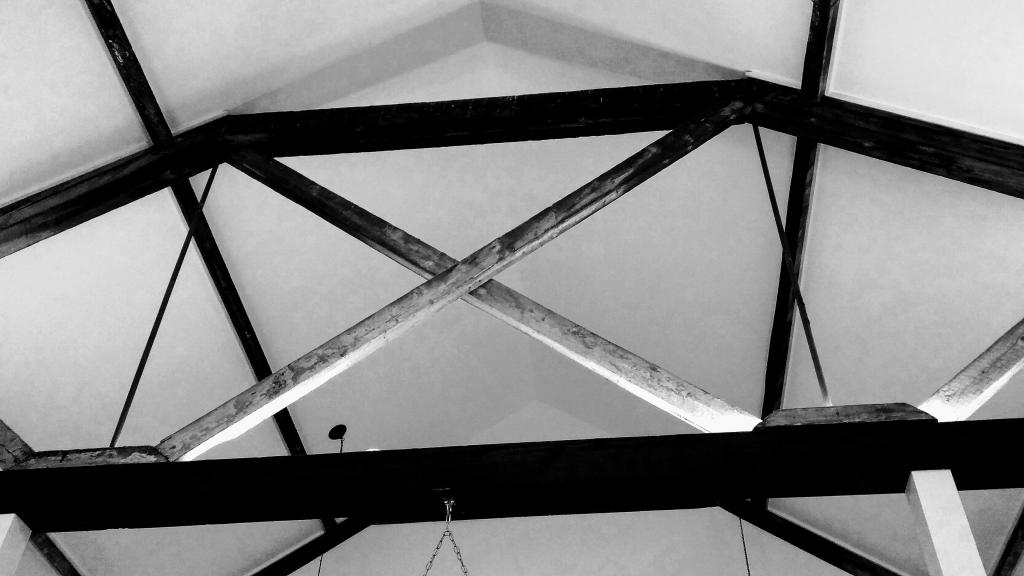
Twenty-five years ago today I started work at the PEI Crafts Council, just up the street from where I sit right now.
And thus began our new life on Prince Edward Island.
Catherine followed a month later, once she’d extricated herself from her myriad projects in Ontario, and we took up residence in a tiny two-room apartment at 50 Great George Street, around the corner from where we live now.
I was 27 years old, wet behind the ears, and quite unprepared for the adventures that lay ahead. As I wrote last week to a new friend:
It was certainly a cliff-jump for us, a young couple in our late 20s moving to a place where we had almost never been, with no family or friends. Plan #1 was to stay for the 18 months of my job contract. But then Catherine found studio space, and I made another job, and we bought a house, and we had Oliver and 25 years passed.
For a good amount of that time I had itchy feet, and would conjure up plans to move us to Paris (etc.). But then, one day, I woke up and felt connected to the place in a way I never expected and now the gravitational pull of the Island runs strong.
So Plan #2 is to stay.
I’ve lived on PEI longer than I’ve lived anywhere else, and when I speak of “home” here is what I’m talking about.
I’ll never be “from here,” of course. But the importance of that has receded into the background, and I do truly feel like I belong here.
Thank you to everyone who’s smoothed the path for us over all these years: friends, colleagues, co-conspirators.
And thank you to Catherine who, when I phoned her from the payphone in the Confederation Centre Public Library and told her that I’d been offered a job on the Island, and had suggested I could start work in two weeks, didn’t leave me on the spot. Prince Edward Island is the great adventure of our lives together, and I couldn’t have–wouldn’t have wanted to have–done it without her.
Ten years ago this month, Wendy MacDonald approached me after a Prince Street Home and School meeting to see if I’d be willing to put my name forward for the position of Regional Director for the Charlottetown area on the provincial board of the PEI Home and School Federation.
At the time Wendy asked, I was only vaguely familiar with the fact that there was a provincial federation, and I knew little about what it did or why it did it. But Wendy is a formidable inviter, and as I was already in a position to know of the good works of Home and School at a local level, I agreed to let my name stand.
A month later, at the Annual General Meeting of the Federation, I was elected to the position, and began what ultimately became a 10 year run, in various positions, on the board (from regional director, I became Secretary, then Vice-President, then President, and, for the past two years, Past-President).
My work with Home and School went completely against type: I have had lifelong doubts about the approach we take to public education, a general discomfort working in groups, and negligible social skills. Like many people, I’d carried around a stereotypical view of “PTA parents” as overbearing joiners, a stereotype constantly stoked by the popular culture.
But, somehow, I fit right in. I found my peers on the provincial board to be interesting, engaged, smart parents and guardians with a desire to improve not only the education of their children, but the education of all children (the mission of the Federation focuses on “the total well-being of all youth”). I have never left one of the 60-odd provincial board meetings I’ve attended over a decade feeling anything but energized. And I believe that, working as a board to support our members in 56 schools across PEI, we’ve achieved significant things together.
Last night I attended my final monthly meeting as a board member: my term as Past-President runs out at our AGM on April 14, 2018. Fittingly, the last meeting was a particularly rollicking one, where we hashed out the details of our AGM, and discussed the best way to feed our members’ oft-stated desire for more opportunities to engage with each other (as opposed to listening to speakers) and our desire to breath new life into our longstanding policy resolutions process. Over three hours of discussion we came up with a solid plan, and I’m excited to see it spring to life in April.
Board member for the Colonel Gray family of schools Sandy Nicholson snapped this photo of a slice of our group last night just before we adjourned (Sandy too is coming to the end of her term on the provincial board; I wouldn’t be surprised to see her return in the future, though!).
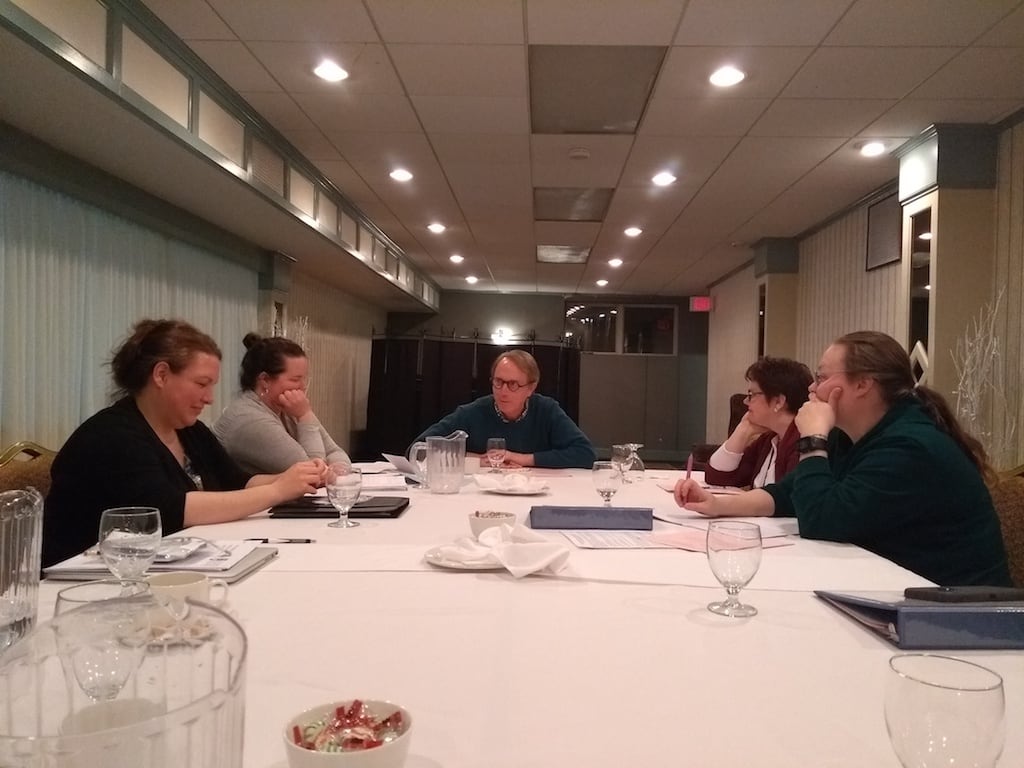
Another pointer from my friend Elmine to an interesting interview on Dutch television, this one with Hillary Clinton, interviewed by Eva Jinek.
Jinek herself has an interesting life story:
Jinek was born in Tulsa, Oklahoma and grew up in Washington, D.C., where she attended Sheridan School. Her Czech parents decided to move to the Netherlands when she was eleven. “Just before I went to high school, they decided that they would prefer that my brother and I grow up in Europe. I remember it was six weeks until I spoke my first word in Dutch.”
Of all the experiences that might be traumatic to a teenager, “we’re moving you to a different country for high school; oh, and by the way, they speak Dutch” surely must rank highly.
File this under “things I always thought were true, but realized couldn’t be true, that actually are true.” Sort of.
From the Wikipedia entry for Armand Hammer:
In the 1980s Hammer owned a considerable amount of stock in Church & Dwight, the company that manufactures Arm & Hammer products; he also served on its board of directors. However, the Arm & Hammer company’s brand name did not originate with Armand Hammer. It was in use some 31 years before Hammer was born. He was spurred to buy shares in the company as a result of often being asked about the brand being so close to his name.
Late last week I received an email from our Executive Director at Stars for Life asking me if I could attend a meeting of the Standing Committee on Education and Economic Development this morning as our Chair, Carolyn Bateman, presented a “briefing on conditions for people with autism in PEI.” I happily agreed, and went along just before 10:00 a.m. this morning, assuming I’d be shown to a seat in the public gallery from where I could offer my (silent) moral support to Carolyn as she presented.
When I arrived in the legislative chamber, however, the Committee Clerk told me that, “as a witness,” I’d be sitting “inside the rail,” beside Carolyn, in chairs facing the chair.
If you are a student of the Legislative Assembly you will realize that “the rail” represents the dividing line between the profane and the sacred, and traversing the rail a ceremonial act of ascendance. Not a place, in other words, for the everyday likes of me.
Fortunately, the rules of Standing Committees are somewhat more relaxed than the rules of the Legislative Assembly when it’s in full-throated session, and so although there was still a prohibition against non-witnesses crossing the rail, we were allowed to address members by name, not district, we could speak directly to questioners, rather than through the chair, and the entire operation was more probing than jousting.
If you are so-inclined, you can listen to what happened next on SoundCloud, as our testimony was recorded and archived there for posterity (there’s also a video stream, but I believe this is more ephemeral, and that link might not stand the test of time).
Carolyn did an excellent job at making the case for sustainable, long-term, sufficient funding for Stars for Life, and the larger discussion about how we support people young and old with autism toward full citizenship was wide-ranging and positive. I was impressed by the questions the members asked, by their willingness to admit what they didn’t know, and by their understanding that we can move forward, to begin, simply by coordinating the approaches we’re already taking in a way that focuses on the individual, not the bureaucracy.
Through the 90 minutes there was frequent reference to the never-adopted “Autism Action Plan” from 2009; fortunately a PDF of the draft plan still exists in a corner of the province’s website, and I encourage you to read Recommendations Toward A Prince Edward Island Autism Action Plan: Another Piece of the Puzzle. Much of what I tried to emphasize today in my comments was much better summed up by the committee that formulated that draft in its recommendation on internal communication:
Once the trans-departmental governance structure and process is ascertained, clear and sustained channels of communication will be the glue that holds the structure together. While the Ed & ECD has had an unofficial strategy from which to work, the lack of a published strategy and policies have left various stakeholders to deal with service design and delivery with a level of uncertainty. Driven by an ‘officially’ adopted Strategy, interdepartmental communication and service delivery will be strengthened at all levels in the departments, from front-line service providers to managers, Directors and Deputy Ministers. Measures to improve internal communications need to focus on:
- Clarifying roles and responsibilities across departments and school board-based autism professionals;
- Establish channels for information sharing within teams and across teams; and
- Accountability for initiating information sharing meetings.
If we had followed that recommendation in 2009, we’d be in a much better place today; I was encouraged that the members of the Standing Committee seemed to understand that, and, somewhat against type, I have hope for what comes next.
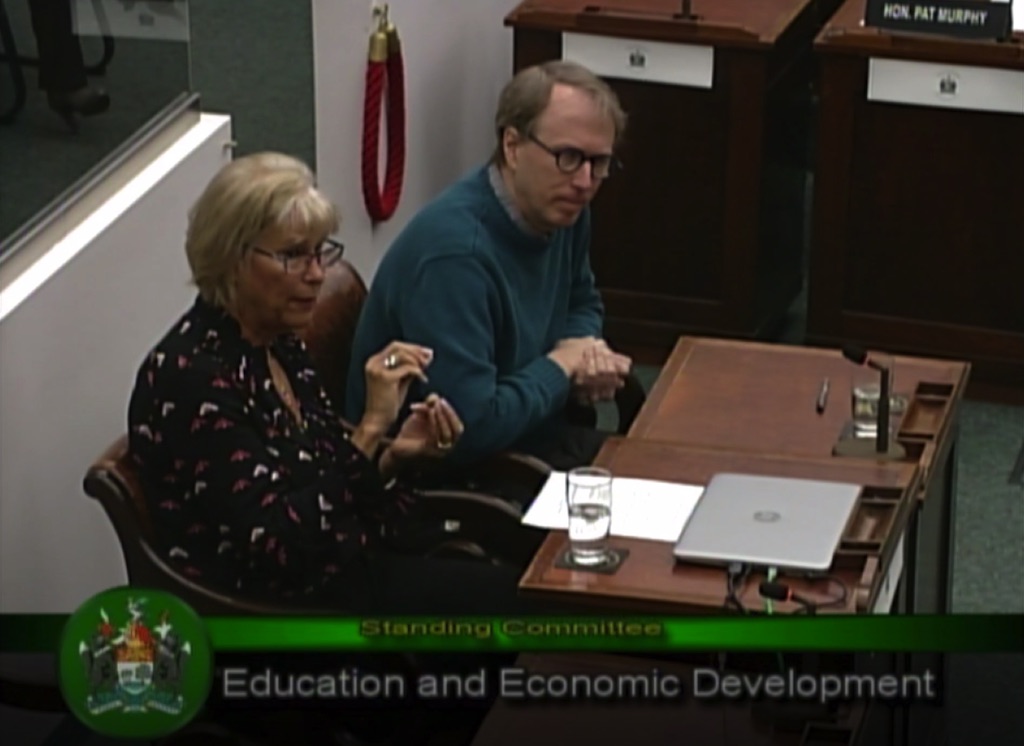
Oliver, with his father, grandmother, great-grandfather, great-great-grandfather, and great-great-great-grandfather.
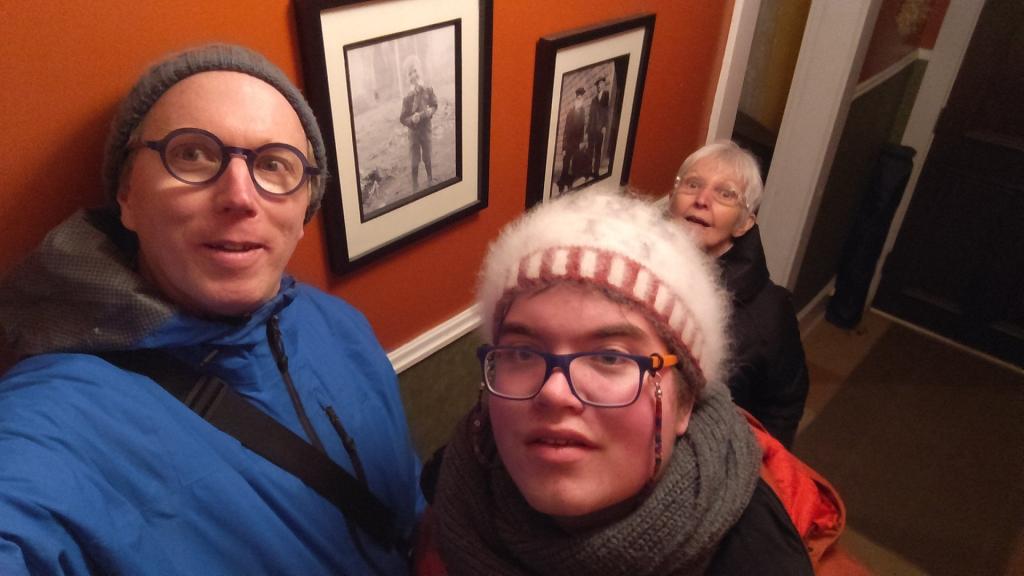
 I am
I am